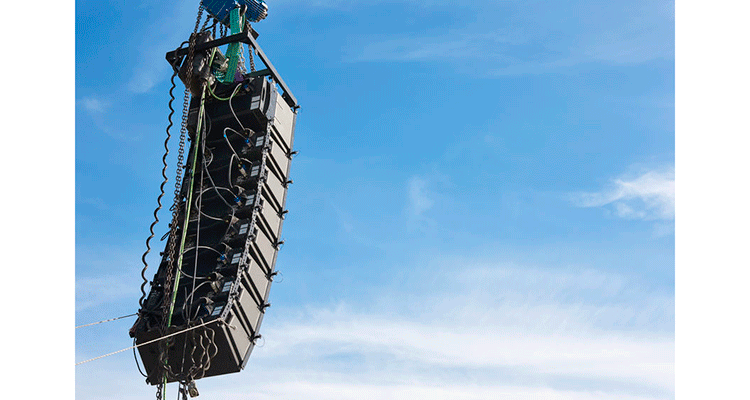The Truth, the Whole Truth and Nothing But the Truth
 Ned Beatty, the highly regarded character actor, playing shady US Senator Charles F. Meachum in the 2007 film, Shooter famously said: “The truth is what I say it is.”
Ned Beatty, the highly regarded character actor, playing shady US Senator Charles F. Meachum in the 2007 film, Shooter famously said: “The truth is what I say it is.”
I have a question for the AV industry – is it?
(If you have seen or don’t remember the movie — the clip can be found here.)
The problem is that technical truth is NOT a subjective area. IF — and that is the imperative word here — globally recognized standards of measurement and assessment of product performance are used to derive the data presented, then there should be zero wiggle room around the specifics.
As a system designer, specifier, consultant or integrator you have to be able to compare products on a level playing field, then that is the point of having “standard” measurement criteria. If two products from the same category are measured using identical testing criteria, then theoretically the results should allow for a direct comparison of performance.
I say theoretically because the lack of supporting parameter data for published specifications or stated performance capabilities is much more prevalent than it should be.
We have had specific criteria for comparison measurement or technical metrics for a long time, and there would seem to be no valid reason, other than deliberate obfuscation, to not include the necessary qualifying information when presented performance data/metrics/specifications.
But is it that simple or is there more at work here than just marketing spin?
Objectively comparing pro audio signal processing products is often impossible. Missing from too many data sheets are the conditions used to obtain the published data. Audio specifications come with conditions. Tests are not performed in a vacuum with random parameters. They are, or least should be, conducted using rigorous procedures and the conditions must be stated along with the test results.
Given those rules of the road, it remains astonishing to me that at least 30-40 percent of the product information documents that cross my desktop every month lack precisely that information.
Certainly, I expect that from copycat or rip-off type stuff masquerading as the real thing. I get 10 to 15 emails a week from various sources offering products at incredible prices — if only I want to buy a whole lot of them for cash. Eliminating those still leaves a surprisingly large number of what would on the surface appear to be legitimate products that simply do not provide valid technical data.
Why any manufacturer would expect to see this way is puzzling. Do they really expect you to risk your company or project or worse, life safety on a questionable piece of hardware?
If there is no test data, no certification data, no testing — how do you know it’s not a potential disaster in a metal (maybe) box?
So what do we as an industry want to do about this? On the surface it would appear not much given the vast number of spec-less products on offer every day. Those products would not be out there if somebody was not buying them.
The question is: Who? And where are they being installed or used?
Does this worry anyone else? It should!
We have, in my opinion, an ethical responsibility to source products and supply/install systems that are verifiably safe and reliable. At least in most of the EU/North America you could be legally responsible if something you sold fails and you knew going in it was a knock-off or not properly vetted/tested/certified. I’m not a lawyer and I don’t play one on TV but do you really want to go down that road?
If it means walking away from a project because the buyer insists on lowest possible price, everything else be dammed — I for one would walk away — would you?
The real question is: Do we have a moral and ethical duty to ourselves and our customers to do the right thing? I am beginning to wonder some days if everyone is thinking along these lines or not.
From where I stand this is not a debate or a question. There is only one answer — we do.
But it would seem that there are those who wouldn’t agree — if you are one of them, please comment or respond with your rationale for not taking the ethical high road? I am legitimately curious as to how that mindset/justification would play out?
I think we need to get this dirty little secret out in the open and shine a bright light on it.
The $20 Experiment
The news feed headline, one of several dozen of a similar nature read: “Up to 80 percent of the products from xyz online marketplace are fakes!” I sat there slightly stunned for about a minute, not quite believing that number, but there were multiple stories about the same issue, from numerous legitimate sources. OK, so let’s find out if this is actually a fact or just fear mongering, I thought.
Here’s the simple $20 test — If you don’t think this is a problem, do your own version. I picked a 10-meter HDMI cable as my item to verify. I know what the list price of a legitimate, known and highly regarded supplier’s version is for that item — $18.99. A fair price for a high-quality product in my opinion (retail). So… enter 10-meter HDMI cable into a search engine and see what happens.
The three major online retail sites produced well over 100 listings for that product category — at prices from $2.99 to $49.99 — and that’s from just the three major sites — if I include all the hits from a search engine, it came to over 300 listings. Now realistically, how many of those are legitimate and how many are fakes? How do you sort that gigantic pool of responses — what criteria do you filter by — price, source, name?
Oh, and by the way at least 20 of the listings had branding that imitated the real company’s logo/name/trade, yet there they were right that the top of the listing on a major site. How easy it would be to fall for the fake! Sure, I know that you can’t get the legit $18.99 cable for $2.99, but if I had assigned this purchase to a less knowledgeable person or simply went by cost when looking for pricing, how could you possibly sort the fakes from the real thing? Now for a 10-meter HDMI cable if that’s how complex it becomes, imagine something more expensive. I think you see where this is going.
It probably matters a lot to the Pradas of the world that some someone out there is cloning their handbags, but people’s lives and property are not on the line there — in the ProAV systems world, they may very well be.
Your turn!




